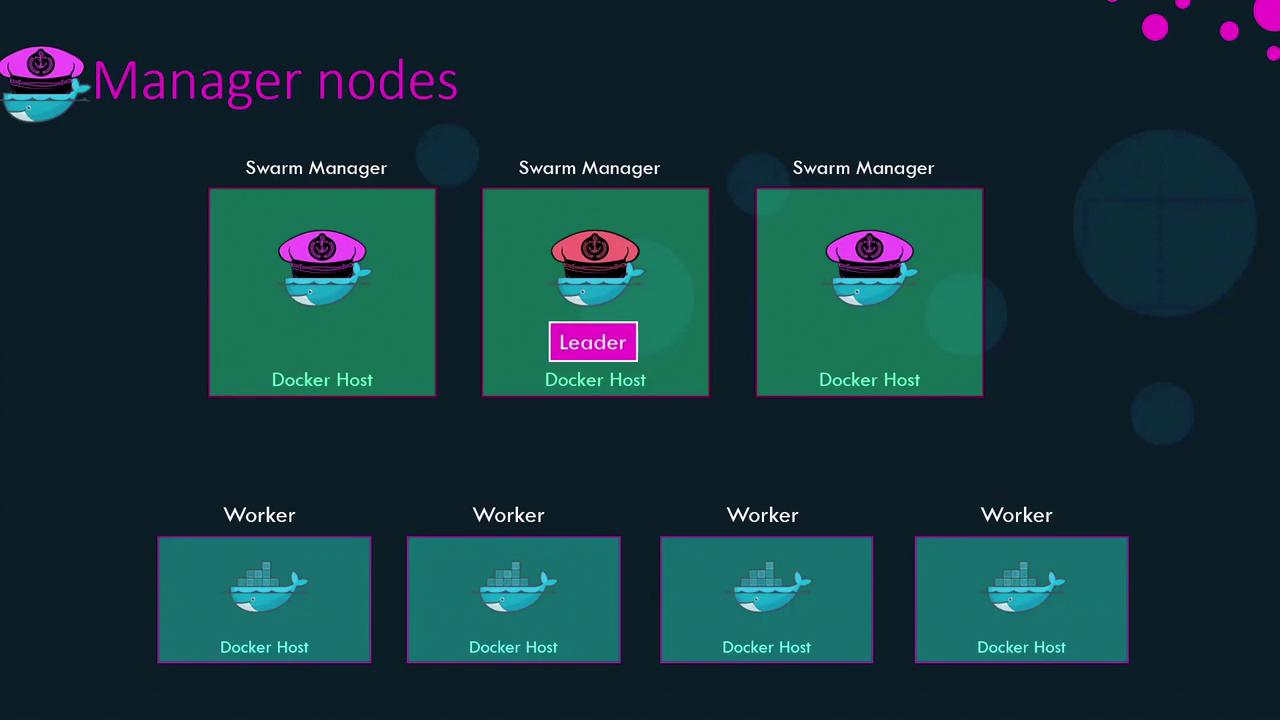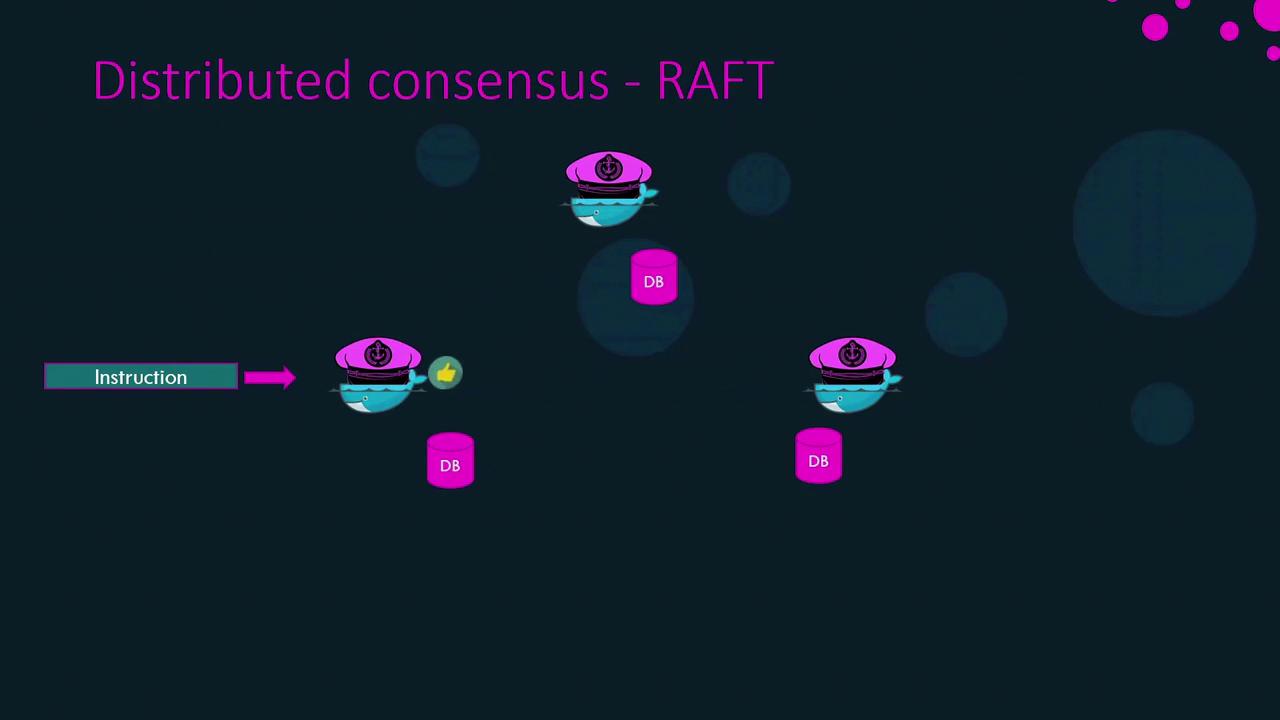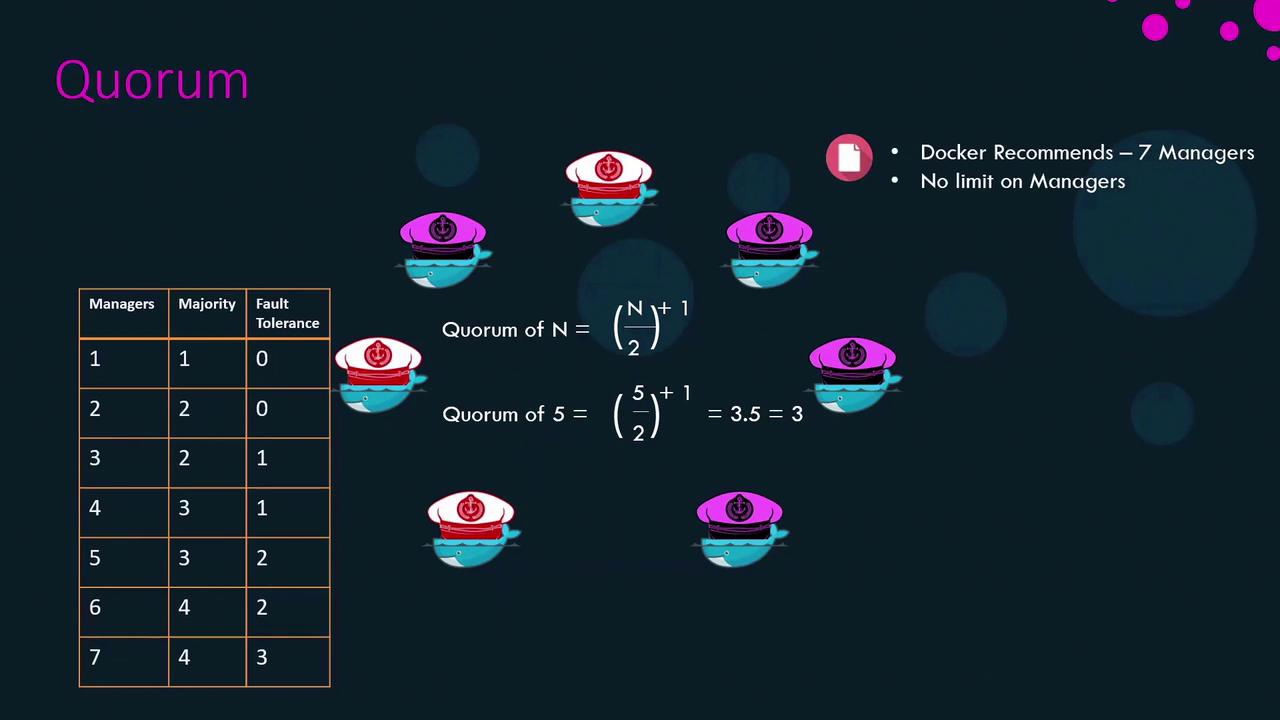Docker Certified Associate Exam Course
Docker Swarm
Swarm High Availability Quorum
In a Docker Swarm cluster, manager nodes are the control plane where the Swarm is initialized. Manager responsibilities include:
- Maintaining the cluster’s desired state
- Scheduling and orchestrating containers
- Adding or removing nodes
- Monitoring health and distributing services
Relying on a single manager is risky: if it goes down, there’s no orchestrator. Deploying multiple managers increases resilience but introduces the risk of conflicting decisions. Docker Swarm avoids this by electing one manager as the leader, which alone makes scheduling decisions. All managers—including the leader—must agree on changes via a consensus protocol before they’re committed.

Even the leader must replicate its decisions to a majority of managers to avoid split-brain scenarios. Docker implements this using the Raft consensus algorithm.
Distributed Consensus with Raft
Raft ensures that one leader is elected and all state changes are safely replicated:
- Each manager starts with a random election timeout.
- When a timeout expires, that node requests votes from its peers.
- Once it gathers a majority, it becomes leader.
- The leader sends periodic heartbeats to followers.
- If followers miss heartbeats, they trigger a new election.
When the leader receives a request to change the cluster (e.g., add a worker or create a service), it:
- Appends the change as an entry in its Raft log.
- Sends the log entry to each follower.
- Waits for a majority of acknowledgments.
- Commits the change across all Raft logs.
This process guarantees consistency even if the leader fails mid-update.

Quorum and Fault Tolerance
A quorum is the minimum number of managers required to make decisions. For n managers:
quorum = ⌊n/2⌋ + 1
Fault tolerance is the number of manager failures the cluster can sustain:
fault_tolerance = ⌊(n - 1) / 2⌋
| Managers (n) | Quorum (⌊n/2⌋+1) | Fault Tolerance (⌊(n-1)/2⌋) |
|---|---|---|
| 3 | 2 | 1 |
| 5 | 3 | 2 |
| 7 | 4 | 3 |

Docker recommends no more than seven managers per Swarm. More managers do not improve performance or scalability and only increase coordination overhead.
Note
Always keep an odd number of managers (3, 5, or 7) to prevent split-brain scenarios during network partitions.
Best Practices for Manager Distribution
- Use an odd number of managers (3, 5, or 7).
- Spread managers across distinct failure domains (data centers or availability zones).
- For seven managers, a 3–2–2 distribution across three sites ensures that losing any single site still leaves a quorum.

Failure Scenarios and Recovery
Imagine a Swarm with three managers and five workers hosting a web application. The quorum is two managers. If two managers go offline:
- The remaining manager can no longer perform cluster changes (no new nodes, no service updates).
- Existing services continue to run, but self-healing and scaling are disabled.
Recovering Quorum
- Bring failed managers back online. Once you restore at least one, the cluster regains quorum.
- If you cannot recover old managers and only one remains, force a new cluster:
This single node becomes the manager, and existing workers resume running services.docker swarm init --force-new-cluster - Re-add additional managers:
# Promote an existing node to manager docker node promote <NODE> # Or join a new manager docker swarm join --token <MANAGER_TOKEN> <MANAGER_IP>:2377
That covers high availability, quorum calculation, Raft consensus, and best practices for Docker Swarm manager nodes. Good luck!
Watch Video
Watch video content